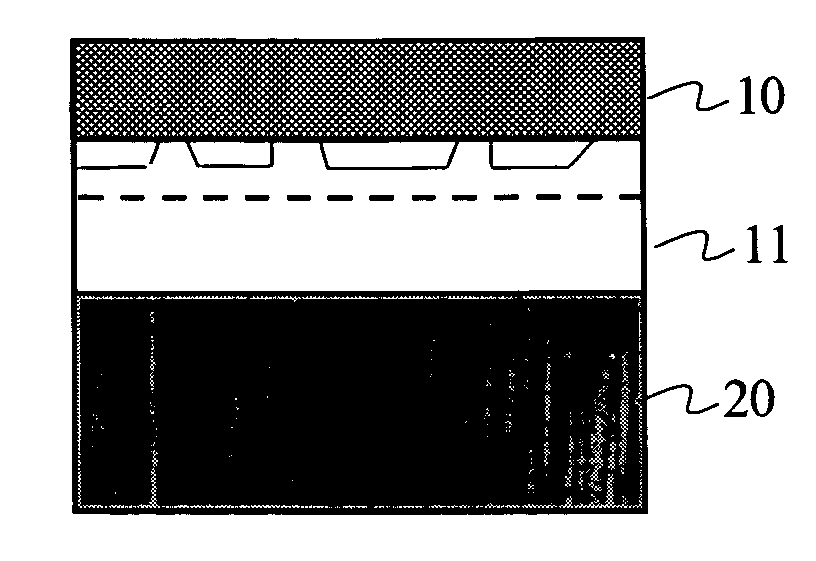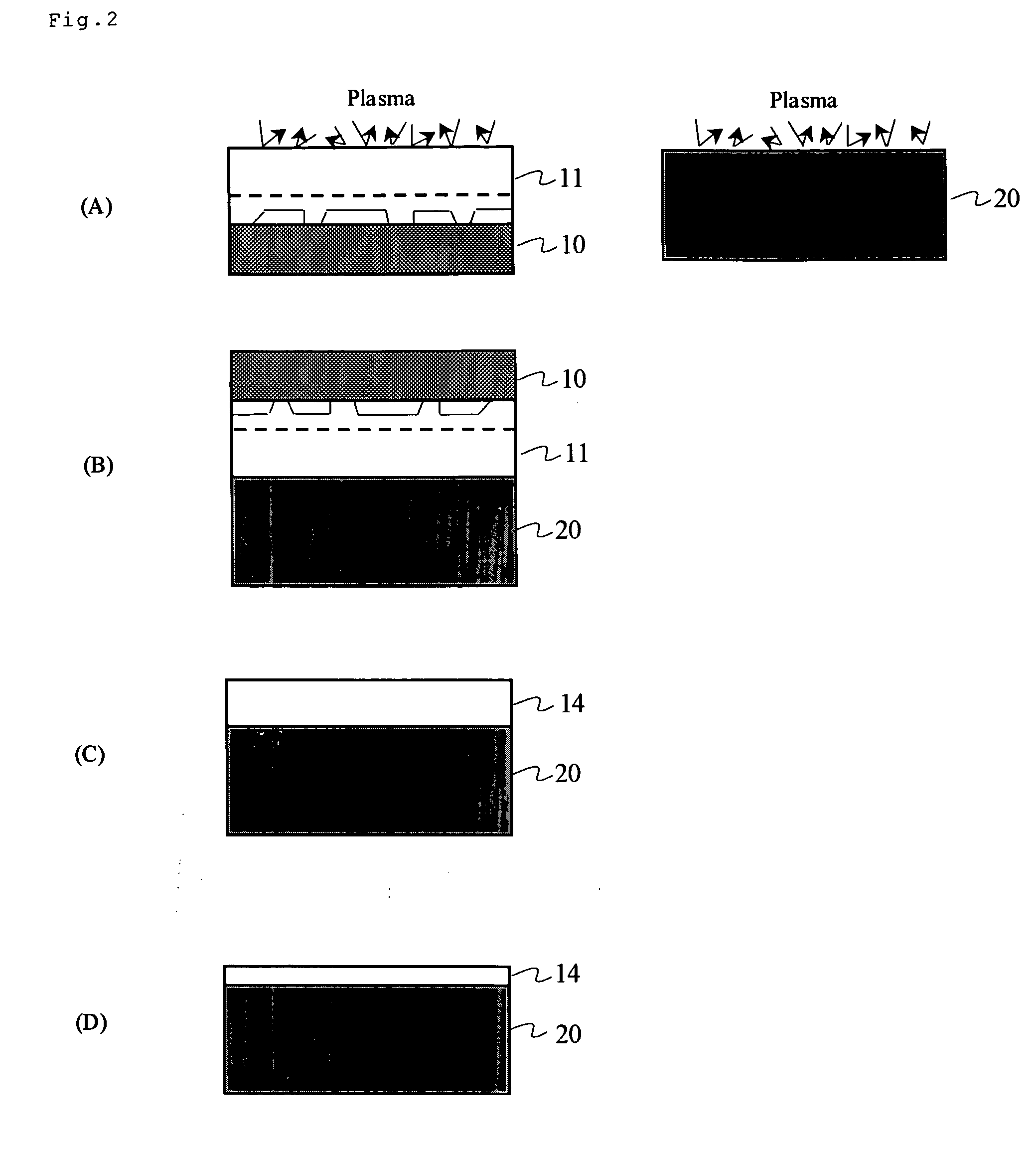Method for manufacturing semiconductor substrate
a manufacturing method and semiconductor technology, applied in the direction of semiconductor devices, basic electric elements, electrical apparatus, etc., can solve the problems of increasing manufacturing costs, difficult to sufficiently reduce the introduction of lattice defects, and the technique cannot be regarded as suitable for industrial production methods, etc., to achieve the effect of simple techniqu
- Summary
- Abstract
- Description
- Claims
- Application Information
AI Technical Summary
Benefits of technology
Problems solved by technology
Method used
Image
Examples
first embodiment
(GeOI Substrate)
[0022]FIGS. 1 (A) to (C) and FIGS. 2 (A) to (D) are flowcharts for explaining an example of a process for manufacturing a semiconductor substrate according to the present invention. In this embodiment, an example of a process for manufacturing a GeOI substrate is explained. In each of these flowcharts, reference numeral 10 denotes a silicon (Si) substrate for epitaxially growing germanium (Ge) by a chemical vapor deposition (CVD) method. The Si substrate 10 is, for example, a generally commercially available Si substrate grown by the CZ (Czochralski) method. The electrical properties of the Si substrate, such as the conductivity type, an electrical characteristic value such as specific resistivity and the like, as well as the crystal orientation and the crystal size thereof are suitably selected depending on the device design values, the process, and the like of the device to which the Ge epitaxial film produced in the method of the present invention is applied.
[0023...
second embodiment
(SGOI Substrate)
[0033]The second embodiment describes an example of a process for manufacturing a SGOI substrates. Since the process is basically the same as that described in the first embodiment, it will be explained again with reference to FIGS. 1 (A) to (C) and FIGS. 2 (A) to (D). In this embodiment, reference numeral 11 in the figures denotes a SiGe epitaxial film obtained by epitaxial growth of silicon germanium (SiGe) by a chemical vapor deposition (CVD) method.
[0034]Also in the SiGe epitaxial film 11, high-density defects (threading dislocations) 12 are introduced from the interface between the SiGe epitaxial film 11 and the Si substrate 10 (FIG. 1 (A)). In order to gather the dislocations in the SiGe epitaxial film 11 near the interface of the epitaxial film 11 and the Si substrate 10 (denoted by reference numeral 12′), a heat treatment is performed at a temperature of not less than 650° C. and not more than 1200° C. (preferably not less than 700° C. and not more than 1200°...
PUM
 Login to View More
Login to View More Abstract
Description
Claims
Application Information
 Login to View More
Login to View More - R&D
- Intellectual Property
- Life Sciences
- Materials
- Tech Scout
- Unparalleled Data Quality
- Higher Quality Content
- 60% Fewer Hallucinations
Browse by: Latest US Patents, China's latest patents, Technical Efficacy Thesaurus, Application Domain, Technology Topic, Popular Technical Reports.
© 2025 PatSnap. All rights reserved.Legal|Privacy policy|Modern Slavery Act Transparency Statement|Sitemap|About US| Contact US: help@patsnap.com



